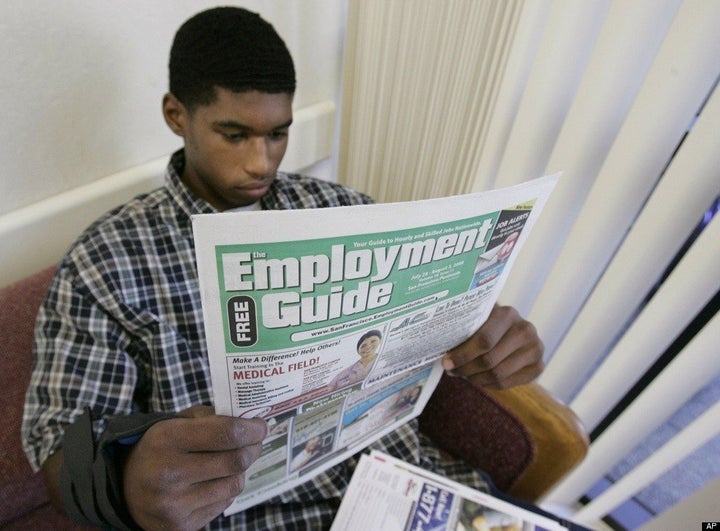
While there is a lot of talk today about jobs, there has been far too little attention paid to the job prospects of young people. A new report prepared for the Children’s Defense Fund shows young people have lost more ground economically than any other age group over the last three decades.
Dr. Andrew Sum, professor and director of the Center for Labor Market Studies at Northeastern University, and his colleagues paint a grim economic picture for the futures of young workers and young families, and Black young people and young families fare the worst. The widening income inequality and declining real incomes of young Black families with children raise serious questions about the economic and social futures of their children. The American Dream for poor young people and their children is vanishing on our watch.
Why does employment for these young people matter so much? The researchers have pointed out that what might seem like “just” a first job is much more important: early work experience is a form of “human capital investment” that influences the future employment and annual earnings of young adults. But employment rates for teens and young adults often decline at above average rates during economic recessions and jobless recoveries. The number of teens and young adults ages 16 -29 who were “underutilized” in the labor market grew substantially between 2000 and 2010. These are young people who were unemployed (jobless but actively looking and available for work); not actively looking for work (but still wanting to work); or underemployed (in part time jobs but wanting to work full time).
Black young adults, and especially Black males, had the highest labor underutilization rates, at 40 percent and 43 percent respectively. As the Children’s Defense Fund relaunches the Black Community Crusade for Children to strengthen our children’s futures, these vanishing employment opportunities are one part of the huge crisis for which we need to find solutions.
Dr. Sum and his colleagues found the young people who need applied work experience most were the least likely to receive it, with negative consequences for their own future school retention, employability, wages, and earnings. Between 2007 and 2010, the number of young people 16 to 29 officially unemployed rose by nearly 80 percent. Education levels make an enormous difference in the employability of young people. Black high school dropouts 16 to 29 were four and a half times as likely to be underutilized as Black young people in the same age group with master’s or higher degrees. Employment rates of the nation’s 20-24 year olds ranged from a low of 49 of every 100 high school dropouts to a high of 85 of every 100 bachelor’s degree holders.
The deteriorating labor market has also resulted in another problem—a rise in “mal-employment” among young college graduates, meaning more of them are holding jobs in occupations that don’t require much schooling beyond high school. And this ultimately hurts younger and less educated workers too, as mal-employed college graduates often displace their less educated peers from these jobs. These gaps based on educational attainment widened between 2000 and 2010, reducing the opportunity for young adults without post secondary schooling to form households, marry, and support their children in young families.
Along with the decline in employment opportunities, family income inequality has risen for young families, and the median real incomes of young families have declined—once again, taking an especially great toll on young Black families. The median income for young Black families in 2009 was slightly under $20,000—a decline of 24 percent over the last three decades, and only 45 percent of the level for White families. Once again, education levels mattered: the median family incomes of young Black families ranged from under $9,000 when the family householder did not have a high school diploma to $17,000 for high school graduates and to nearly $65,000 for those headed by a householder with an advanced degree.
Overall, 55 percent of young Black families with children were either poor or near poor, and nearly three-fourths were low-income. Three of every four single mother families with a head lacking a high school diploma were poor in 2009. The gap in young families’ income has risen so dramatically that children in the bottom half of the distribution are falling backwards.
What does all of this mean? It means no discussion of continued economic recovery and how to add jobs can be complete without a special focus on how to help young workers—and no discussion on ending child poverty or securing the futures of our nation’s children, especially Black children, can be complete without special attention to the economic status of young families. Creating more employment opportunities for younger workers and making sure young people graduate from high school and move on to higher education are essential to address the needs of young families and their children. Their children’s economic and social futures depend on it.
To read the full report, Deteriorating Employment Rates and Incomes Threaten the Future of Young Workers and Young Families: Black Young People and Young Families Fare the Worst, visit the Black Community Crusade for Children’s Web page.
